Most 1975 dimes are common coins worth face value to $1, including those with “D” (Denver) and “S” (San Francisco) mint marks. However, the rare 1975 “no-S” proof dime is extraordinarily valuable, with only two known examples. One recently sold for $506,250 in October 2024, while another fetched $456,000 in 2019. This error coin was accidentally struck without the required “S” mint mark on proof dimes from San Francisco. The key difference is that valuable specimens are proof coins with mirror-like, reflective finishes—not regular business strikes found in circulation. To identify this rarity, look for a shiny, mirror-like surface with frosted devices and complete absence of any mint mark.
Most 1975 dimes sitting in your pocket change are worth exactly ten cents, but one extraordinary error has collectors scrambling through their old coin sets. In October 2024, a single 1975 dime sold at auction for $506,250, making it one of the most valuable dimes ever discovered. The catch? This wasn’t just any dime pulled from circulation. Understanding what separates a half-million-dollar coin from pocket change requires knowing exactly what to look for, and why this particular error is so astronomically valuable.
The Story Behind the Half-Million-Dollar Dime
The 1975 “no-S” proof dime represents one of the United States Mint’s most significant modern errors. In 1975, the San Francisco Mint was responsible for producing proof coins, special collector versions with mirror-like finishes meant for proof sets. Every proof dime should have carried an “S” mint mark on the obverse (front) near the date, just above the torch base.
However, during production, at least one die was accidentally used without the “S” mint mark being punched into it. This die struck an unknown number of dimes that were then packaged into 1975 proof sets and sold to collectors. For years, these sets sat unopened or unexamined, with owners having no idea they might possess a treasure worth hundreds of thousands of dollars.
Only two examples have been confirmed to exist in the entire world. The first was discovered and sold at auction in 2019 for $456,000 through Heritage Auctions. The second example remained hidden until 2024, when it surfaced and sold for $506,250, setting a new record for this error type. The rarity is absolute: with only two known specimens from a potential mintage of 2.8 million proof sets produced that year, the odds of finding another are microscopically small but not impossible.
Standard 1975 Dime Values: What Your Regular Coins Are Worth
Before you get too excited about that 1975 dime in your change jar, it’s essential to understand that the vast majority of 1975 dimes are common and worth very little. The Philadelphia, Denver, and San Francisco mints struck hundreds of millions of these Roosevelt dimes for circulation, and they remain plentiful today.
1975 No Mint Mark (Philadelphia): The Philadelphia Mint produced 585,673,900 dimes for circulation in 1975, none bearing a mint mark. These are business strikes with a standard satin finish. In circulated condition, they’re worth face value of ten cents. Even in uncirculated condition, you’re looking at around one to three dollars at most.
| Grade | Value |
|---|---|
| Good (G-4) to Fine (F-12) | $0.10 |
| Extremely Fine (EF-40) | $0.10 |
| About Uncirculated (AU-50) | $0.10 to $0.25 |
| Mint State (MS-60) | $1.00 |
| Mint State (MS-65) | $2.50 to $3.00 |
1975-D (Denver): The Denver Mint struck 313,705,300 dimes in 1975, each bearing a “D” mint mark on the obverse. These are equally common and follow the same value pattern as Philadelphia strikes. Circulated examples are worth ten cents, while high-grade uncirculated pieces might fetch one to three dollars.
| Grade | Value |
|---|---|
| Circulated (G-4 to EF-40) | $0.10 |
| About Uncirculated (AU-50) | $0.10 to $0.25 |
| Mint State (MS-60) | $1.00 |
| Mint State (MS-65) | $2.50 to $3.00 |
1975-S Proof (Standard): The San Francisco Mint included proof dimes in collector proof sets, with approximately 2.8 million sets produced. These proof dimes have mirror-like fields and frosted devices, creating a cameo effect. Standard 1975-S proof dimes with the “S” mint mark are worth around one to five dollars depending on condition and eye appeal, with deep cameo examples commanding slightly higher premiums.
| Grade | Value |
|---|---|
| Proof-63 | $1.50 |
| Proof-65 | $2.50 |
| Proof-67 | $4.00 |
| Proof-69 Deep Cameo | $8.00 to $12.00 |
The key takeaway: if you find a 1975 dime in circulation or even in a proof set with the “S” mint mark present, you have a common coin worth a dollar or two at most, not a fortune.
Identifying the $500,000 Error: Proof vs. Business Strike
The single most important factor in determining whether you have a valuable 1975 dime is understanding the difference between a proof coin and a business strike. This distinction is absolutely critical because regular Philadelphia dimes also lack a mint mark, but they’re worth only face value.
Business Strike Characteristics:
Business strikes are coins intended for everyday circulation. They have a satin or slightly frosty luster across the entire surface. The strike quality is good but not exceptional, and you’ll often see minor imperfections or contact marks even on uncirculated examples. The fields (flat background areas) have the same finish as the raised design elements. If you found the coin in pocket change or a bank roll, it’s definitely a business strike.
Proof Characteristics:
Proof coins are struck multiple times using specially polished dies and planchets, creating a dramatically different appearance. The fields are deeply mirrored and reflective, almost like looking into a chrome surface. The raised design elements (Roosevelt’s portrait, the torch, olive branch, and oak branch) have a frosted, matte texture that contrasts sharply with the mirror fields. This cameo or deep cameo effect is immediately apparent when comparing a proof to a business strike side by side.
Proof coins were only available in sealed proof sets sold by the U.S. Mint, never released into circulation. They came in protective plastic holders within special packaging. If you didn’t purchase or inherit a proof set from 1975, you don’t have a proof dime.
The Critical Test:
Hold the coin at an angle under good lighting. If you see a mirror-like reflection in the background fields with frosted design elements, you have a proof. If the entire surface has a uniform satin sheen, you have a business strike. Only after confirming you have a proof should you check for the missing “S” mint mark.
Other 1975 Dime Errors Worth Searching For
While the no-S proof error is the headline grabber, other errors from 1975 exist and can add modest premiums to your dime’s value, though nothing approaching six figures.
Off-Center Strikes: Dies occasionally become misaligned during production, resulting in off-center strikes where the design doesn’t fully appear on the planchet. Minor off-center errors (5-10%) add minimal value, perhaps two to five dollars. Dramatic off-center strikes showing 30-50% of the design missing with a visible date can bring $25 to $75 depending on the severity and eye appeal.
Double Die Errors: Doubled dies occur when the die receives a doubled impression during the hubbing process, creating doubled elements in the design. No significant doubled die varieties have been documented for 1975 Roosevelt dimes, but minor doubling can occasionally be found on individual coins. These typically add only a few dollars to the coin’s value unless the doubling is particularly strong and dramatic.
Clipped Planchets: When the strip of metal used to punch out coin blanks overlaps slightly, the resulting planchet has a curved clip missing from the edge. Small clips (5-10% of the coin) might add five to fifteen dollars in value. Larger clips removing 25% or more of the coin can bring $30 to $60.
Strike-Through Errors: When foreign objects like cloth fibers, grease, or other debris get between the die and planchet during striking, they create strike-through errors with portions of the design missing or weakened. Values range from five to thirty dollars depending on the size and visual impact of the error.
Broadstrike Errors: When the collar die that holds the planchet in place fails to engage, the coin spreads out beyond its normal diameter during striking. The result is a thinner, wider coin without the normal reeded edge. Broadstrike errors typically sell for $20 to $50.
According to Heritage Auctions data from 2023, typical mint errors on Roosevelt dimes from the 1970s sell in the $15 to $75 range, with extreme examples occasionally reaching $150 to $300. These are collectible curiosities but remain far more affordable than the legendary no-S proof.
Where to Find and How to Sell Valuable 1975 Dimes
If you believe you might have discovered a 1975 no-S proof dime, proper authentication and selling through the right channels is crucial to realizing its potential value.
Where to Search:
Focus your efforts on unopened or recently opened 1975 proof sets. These were sold by the U.S. Mint in 1975 for approximately six dollars and often ended up stored in drawers, safe deposit boxes, or estate collections. Many proof sets from this era remain sealed in their original government packaging. Check with elderly relatives, estate sales, coin shops selling old proof sets, and online marketplaces where people might be liquidating inherited collections without realizing their potential value.
Do not waste time searching pocket change or bank rolls. The no-S proof was never released into circulation, and the regular Philadelphia business strikes you’ll find there are worth only face value regardless of condition.
Authentication Steps:
First, confirm the coin is definitely a proof, not a business strike. Second, examine the obverse carefully with at least 5x magnification, looking at the area just above the torch base where the “S” mint mark should appear. If no mint mark is present and you’ve confirmed it’s a proof, do not clean the coin or handle it excessively.
Purchase a high-quality coin holder or capsule to protect it immediately. Contact one of the major third-party grading services: Professional Coin Grading Service (PCGS) or Numismatic Guaranty Company (NGC). These services will authenticate your coin, verify it as genuine, and encapsulate it in a tamper-evident holder with a grade and certification number.
Selling Options:
For a coin potentially worth hundreds of thousands of dollars, consignment through a major auction house is the best option. Heritage Auctions, Stack’s Bowers Galleries, and Legend Rare Coin Auctions have experience handling extremely valuable modern errors and can attract serious collectors willing to pay top dollar.
The auction house will photograph your coin, create detailed lot descriptions, and market it to their database of registered bidders specifically interested in Roosevelt dime errors. They’ll charge a seller’s fee (typically 10-15% of the hammer price), but the exposure and competitive bidding environment will maximize your return.
Alternatively, you could approach major dealers specializing in mint errors and modern rarities. They may make outright purchase offers, though you’ll likely receive less than auction results. The advantage is immediate payment without waiting for an auction cycle.
Never attempt to sell an ungraded coin claiming to be a 1975 no-S proof online or to local dealers without professional authentication. The risk of being accused of fraud or receiving a lowball offer is too high.
Understanding What Makes This Error So Valuable
The astronomical value of the 1975 no-S proof dime stems from the perfect combination of three factors that rarely align: absolute rarity, clear error attribution, and strong collector demand.
Absolute Rarity: With only two known examples from a potential population of 2.8 million proof sets, the survival rate is approximately 0.00007%. This makes it exponentially rarer than famous coins like the 1909-S VDB Lincoln cent (484,000 minted) or even the 1916-D Mercury dime (264,000 minted). Among modern U.S. coins, few errors can claim such extreme rarity.
Clear Attribution: The error is obvious and unambiguous. Either the “S” mint mark is present or it isn’t. There’s no subjective judgment about whether the error is “strong enough” or debate about authenticity when properly graded. This clarity makes collectors comfortable paying premium prices because they know exactly what they’re getting.
Strong Demand: Roosevelt dime collectors, proof set collectors, and mint error specialists all pursue this coin, creating overlapping demand from multiple collecting communities. The modern date makes it accessible compared to classic rarities from the 1800s, and the dramatic story of the missing mint mark captures public imagination.
The two confirmed examples have sold in 2019 and 2024, establishing a clear market value trajectory. As more time passes without additional discoveries, confidence grows that the population is truly limited to just these two coins, further supporting and potentially increasing their value.
Market data from similar modern mint errors supports these valuations. The 1970-S small date Lincoln cent (estimated 40-50 examples) sells for $2,000 to $3,500. The 1982 no-P Roosevelt dime (thousands exist) trades for $25 to $150. The 1983 no-S proof dime (only one known until recently, now several confirmed) has sold for over $30,000. The pattern is clear: fewer known examples equals exponentially higher values.
Taking Action on Your 1975 Dimes
Start by gathering any 1975 proof sets in your possession or that you can access through family collections. Open them carefully if they’re still sealed, examining each coin with proper lighting and magnification. Remember that the standard 1975-S proof dime with the mint mark is worth only a few dollars, so there’s no reason to leave sets unopened out of misplaced caution about “original packaging” value.
Use a jeweler’s loupe or coin magnifier of at least 5x magnification to inspect the area above the torch on the obverse. Compare your proof dime to images of confirmed 1975-S proofs showing the “S” mint mark location. If you’re uncertain, visit a local coin shop and ask them to help you examine it, but don’t leave the coin with them without proper documentation.
For regular circulated 1975 dimes, check them for dramatic errors like significant off-center strikes, major clips, or obvious doubling before spending them. Minor errors aren’t worth the time to sell individually, but a bag of error coins can be sold in bulk to dealers for small premiums.
Consider joining online communities like the Coin Community Forum or CoinTalk, where experienced collectors can help you identify errors and provide guidance on authentication and selling. These forums have members who’ve handled every type of mint error and can offer valuable advice specific to your situation.
The combination of extreme rarity and clear error characteristics makes the 1975 no-S proof dime one of the most exciting modern coin discoveries possible. While finding one requires extraordinary luck, the value potential justifies the few minutes needed to check any 1975 proof sets that might be sitting forgotten in your collection.
You may be interested:
- 1859 Indian Head Penny Coin Value Complete Errors List And No Mint Mark Worth Guide For Collectors
- 1911 V Nickel Coin Value Guide Complete Errors List And No Mint Mark Worth Today
- 1902 Dime Coin Value Complete Errors List With O S And No Mint Mark Worth Guide
- 1788 Quarter Coin Value Complete Guide Errors List And D S P Mint Mark Worth Revealed
- 1776 To 1976 Bicentennial Half Dollar Coin Value Complete Errors List And What Your D S And No Mint Mark Coins Are Actually Worth
- 1990 Penny Coin Value Errors List How D S And No Mint Mark Pennies Are Worth Thousands Of Dollars

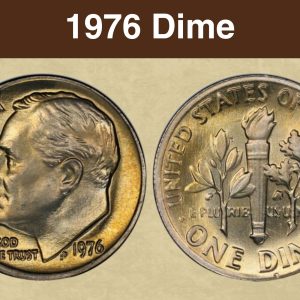
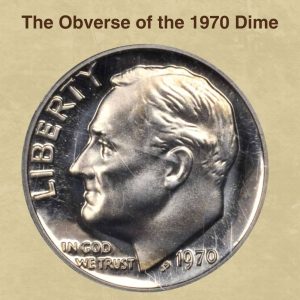
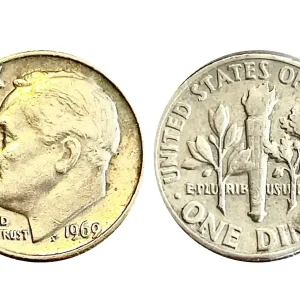
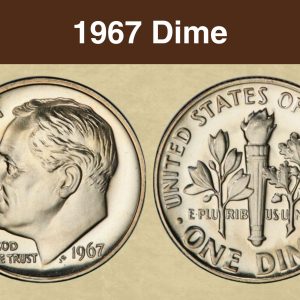
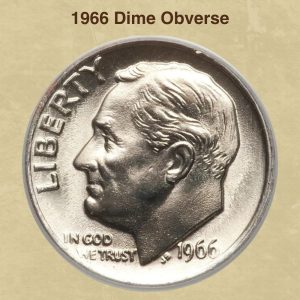
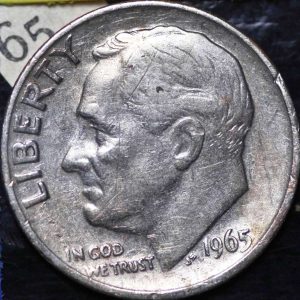
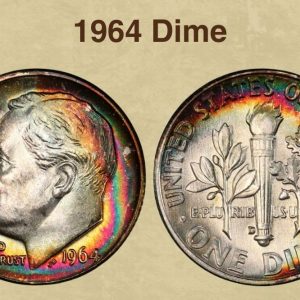
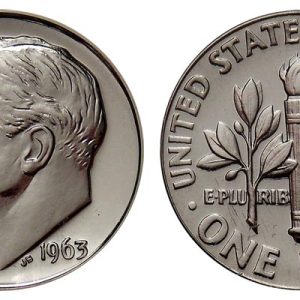
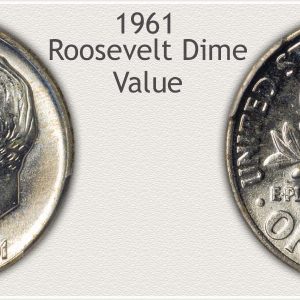
What is the error coin 1975 dime with no mint mark?
A 1975 dime with a “no S” mint mark error is an exceptionally rare and valuable coin that is highly sought after by collectors, with only two known examples existing from 1975 proof sets, while a standard 1975 dime without a mint mark is from the Philadelphia Mint and is worth only face value. To have the rare version, the dime must come from a proof set, have a mirror-like finish with frosted design elements, and be missing the “S” mintmark, making it an elusive piece of numismatic history w…
How much is a 1975 No. S dime worth today?
A 1975 “no S” dime is extremely valuable, with the known examples selling for over $500,000. These are not common circulating dimes but are rare 1975 San Francisco proof set errors, with only two confirmed examples existing. A regular 1975 Philadelphia (no mint mark) dime is only worth its 10-cent face value.
How to identify 1975 no s dime error list?
Where Is the Mint Mark on a 1975 Dime: Check the front (obverse) of the coin, just above the date near Roosevelt’s neck. Normally, those struck in San Francisco for proof sets bear an “S” mint mark. A “No S” one lacks this mint mark. Proof Coin Features: The error only occurs in proof sets.
How many 1975 No. S. proof dimes were made?
The U.S. Mint produced 2.84 million proof sets in 1975 with the S mint mark, signifying they were minted at the San Francisco Mint. Only two sets have been discovered containing the dime without the S mint mark.